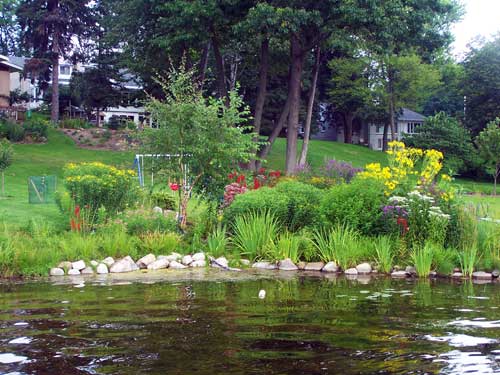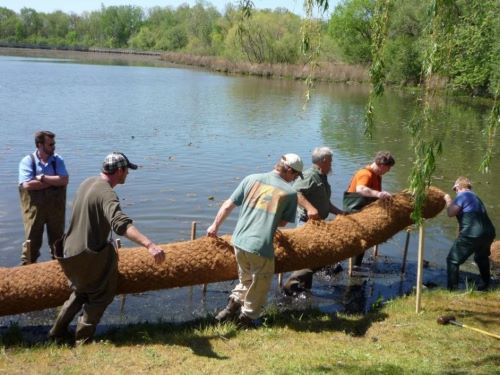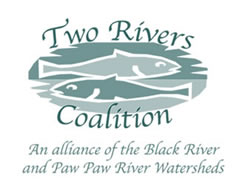Home>Our Work>Waterfront Living>Natural Shoreline Landscaping
Natural Shoreline Landscaping

A natural shoreline is a complex ecosystem that sustains fish and wildlife and protects the entire lake. Native vegetation along the shore acts as a buffer zone, intercepting nutrients and reducing runoff, erosion, and sedimentation. Aquatic plants provide food and shelter for ducks, songbirds, an other animals while reducing problems caused by Canada geese and burrowing muskrats.
Use Native Plants
Native plants create habitats that support our native fish, wildlife, birds and the organisms on which they depend. The use of native wetland and upland plants will allow you to create a natural environment that benefits both you and your lake.
Constructing a structure or dredging on the bottomlands of an inland lake requires a permit under Part 301, Inland Lakes and Streams, of the Natural Resources and Environmental Protection Act, 1994 PA 451, as amended. However, the MDEQ has created a minor project category to allow expedited permit application processing for specific bioengineering practices for stabilization of inland lake shorelines. The objective of the minor project category is to reduce the inconvenience and cost of the permit process for applicants proposing minor activities while protecting aquatic resources. More information on the minor project category and an application with directions can be found at: www.mi.gov/jointpermit
Events:
Check out the results and presentations from the 2023 Shoreline and Shallows Conference
 Resources:
Resources:
Lakescaping Brochure - MSUE
Softshore Engineering - MDNRE
Shoreline Alterations & Lakescaping
MDEQ Permit Guide - Shoreline Protection
MDEQ Permit Guide - Bioenineering Project on Inland Lakes
Michigan Natural Shoreline Partnerships

